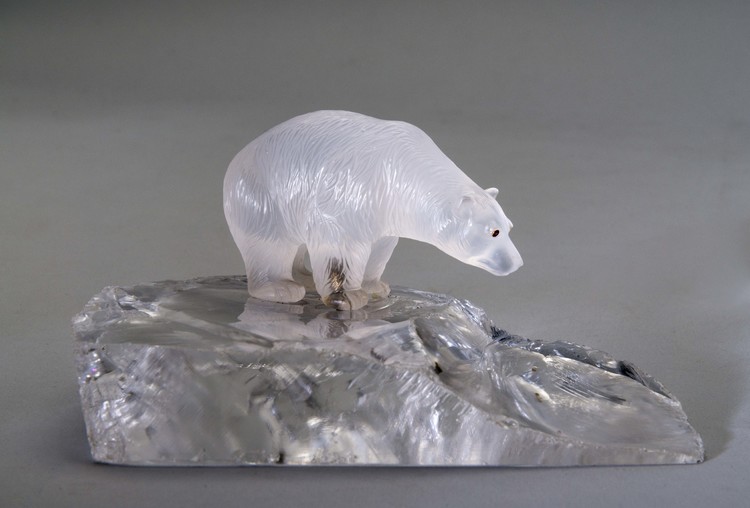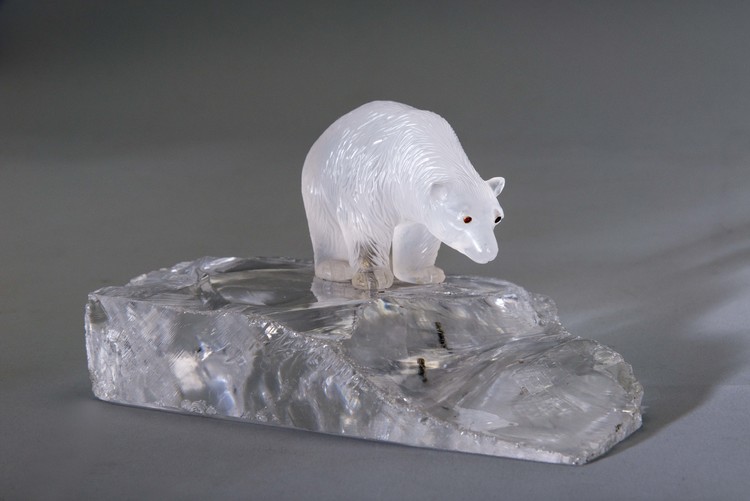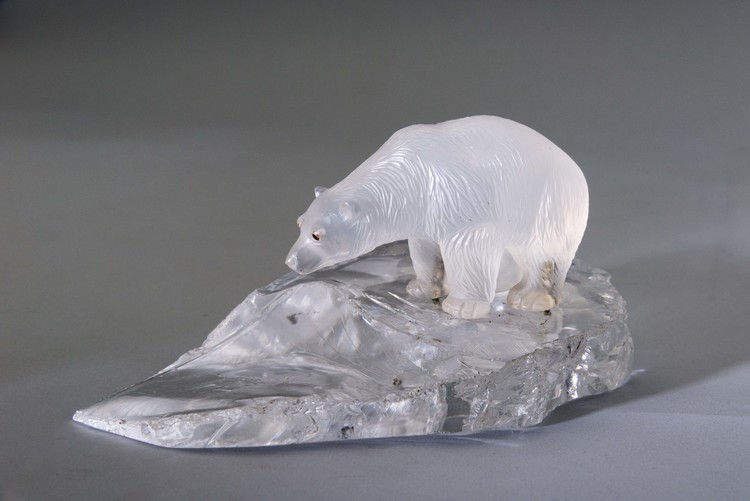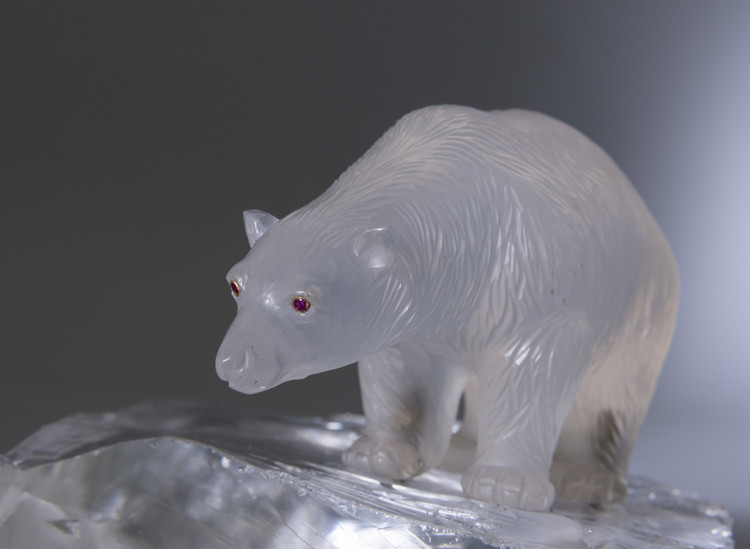The House of Fabergé’s sculptural depictions of animals were made with a great eye for detail and a keen understanding of the natural world and zoology. Kenneth Snowman, the first Fabergé scholar, held that if a hardstone figurine gave one the impression that it was about to come to life and scamper off, it was clear that it was a Fabergé original.
Like the human figurines, these animals were carved out of hardstone found in the Russian Empire. Giving onlookers the impression of animal fur or wool required finding just the right kind of stone. In the case of the polar bear figurine in the Museum’s collection, it was carved out of mountain crystal polished in such a way as to resemble the animal’s rugged fur. The bear is depicted hunting for fish at the edge of an ice floe carved out of a piece of mountain crystal. Fabergé also used this technique to create a series of “frozen” jewels, the epitome of which was the Winter Imperial Easter Egg, given by Emperor Nicholas II to his mother Maria Feodorovna on Easter 1913.





